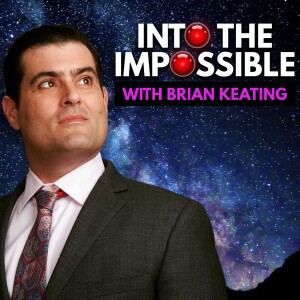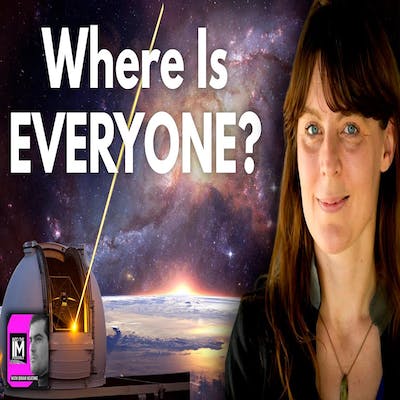
- Podcast Features
-
Monetization
-
Ads Marketplace
Join Ads Marketplace to earn through podcast sponsorships.
-
PodAds
Manage your ads with dynamic ad insertion capability.
-
Apple Podcasts Subscriptions Integration
Monetize with Apple Podcasts Subscriptions via Podbean.
-
Live Streaming
Earn rewards and recurring income from Fan Club membership.
-
Ads Marketplace
- Podbean App
-
Help and Support
-
Help Center
Get the answers and support you need.
-
Podbean Academy
Resources and guides to launch, grow, and monetize podcast.
-
Podbean Blog
Stay updated with the latest podcasting tips and trends.
-
What’s New
Check out our newest and recently released features!
-
Podcasting Smarter
Podcast interviews, best practices, and helpful tips.
-
Help Center
-
Popular Topics
-
How to Start a Podcast
The step-by-step guide to start your own podcast.
-
How to Start a Live Podcast
Create the best live podcast and engage your audience.
-
How to Monetize a Podcast
Tips on making the decision to monetize your podcast.
-
How to Promote Your Podcast
The best ways to get more eyes and ears on your podcast.
-
Podcast Advertising 101
Everything you need to know about podcast advertising.
-
Mobile Podcast Recording Guide
The ultimate guide to recording a podcast on your phone.
-
How to Use Group Recording
Steps to set up and use group recording in the Podbean app.
-
How to Start a Podcast
-
Podcasting
- Podcast Features
-
Monetization
-
Ads Marketplace
Join Ads Marketplace to earn through podcast sponsorships.
-
PodAds
Manage your ads with dynamic ad insertion capability.
-
Apple Podcasts Subscriptions Integration
Monetize with Apple Podcasts Subscriptions via Podbean.
-
Live Streaming
Earn rewards and recurring income from Fan Club membership.
-
Ads Marketplace
- Podbean App
- Advertisers
- Enterprise
- Pricing
-
Resources
-
Help and Support
-
Help Center
Get the answers and support you need.
-
Podbean Academy
Resources and guides to launch, grow, and monetize podcast.
-
Podbean Blog
Stay updated with the latest podcasting tips and trends.
-
What’s New
Check out our newest and recently released features!
-
Podcasting Smarter
Podcast interviews, best practices, and helpful tips.
-
Help Center
-
Popular Topics
-
How to Start a Podcast
The step-by-step guide to start your own podcast.
-
How to Start a Live Podcast
Create the best live podcast and engage your audience.
-
How to Monetize a Podcast
Tips on making the decision to monetize your podcast.
-
How to Promote Your Podcast
The best ways to get more eyes and ears on your podcast.
-
Podcast Advertising 101
Everything you need to know about podcast advertising.
-
Mobile Podcast Recording Guide
The ultimate guide to recording a podcast on your phone.
-
How to Use Group Recording
Steps to set up and use group recording in the Podbean app.
-
How to Start a Podcast
-
Help and Support
- Discover

Into the Impossible With Brian Keating
Science:Natural Sciences

In 2009, Kaltenegger realized that a telescope like JWST would see only tiny signals from atmospheric gases during each transit, so in order to achieve any statistical certainty, astronomers would need to observe dozens or even hundreds of transits, which would take years. Acting on this insight, astronomers started to seek Earths in close orbits around dimmer, colder red dwarf stars, where atmospheric signals will be less drowned out by starlight and transits repeat more frequently.
In 2017, astronomers announced the discovery of seven rocky planets around a red dwarf star called TRAPPIST-1. Then in September, the SPECULOOS-2 system emerged as a backup. These stars are close. They’re dim and red. They each have multiple rocky planets that transit. And as of the summer, the JWST is up and running even better than expected. It will spend a sizable fraction of the next five years staring hard at these messy globes of rock and chemicals spinning around their strange stars. For theoreticians like Kaltenegger who went from daydreaming of alternate Earths to churning out predictions about their atmospheric chemistry, decades of anticipation have given way to a slow fade-in of squiggly spectra on computer monitors.
The goal at the time was to compare spectra from rocky, temperate planets to what Earth’s spectrum would look like from far away, seeking conspicuous signals like a surplus of oxygen due to widespread photosynthesis. Kaltenegger’s objection was that, for the first 2 billion years of Earth’s existence, its atmosphere had no oxygen. Then it took another billion years for oxygen to build up to high levels. And this biosignature hit its highest concentration not in Earth’s present-day spectrum, but during a short window in the late Cretaceous Period when proto-birds chased giant insects through the skies.
Without a good theoretical model for how Earth’s own spectrum has changed, Kaltenegger feared, the big planet-finding missions could easily miss a living world that didn’t match a narrow temporal template. She needed to envision Earth as an exoplanet evolving through time. To do this, she adapted one of the first global climate models, developed by the geoscientist James Kasting, which still includes references to the 1970s magnetic-tape era it originated in. Kaltenegger developed this code into a bespoke tool that can analyze not only Earth through time but also radically alien scenarios, and it remains her lab’s workhorse.
- Follow Lisa https://twitter.com/KalteneggerLisa
- Join the Carl Sagan Inst: https://carlsaganinstitute.cornell.edu
- Read How to Characterize Habitable Worlds and Signs of Life https://www.annualreviews.org/doi/abs/10.1146/annurev-astro-082214-122238
- 🏄♂️ Twitter: https://twitter.com/DrBrianKeating
- 📸 Instagram: https://instagram.com/DrBrianKeating
- 🔔 Subscribe https://www.youtube.com/DrBrianKeating?sub_confirmation=1
- 📝 Join my mailing list; just click here http://briankeating.com/list
- ✍️ Detailed Blog posts here: https://briankeating.com/blog.php
- 🎙️ Listen on audio-only platforms: https://briankeating.com/podcast
Subscribe to the Jordan Harbinger Show for amazing content from Apple’s best podcast of 2018! https://www.jordanharbinger.com/podcasts
🎧 On Apple devices, click here, https://apple.co/39UaHlB scroll down to the ratings and leave a 5 star rating and review The INTO THE IMPOSSIBLE Podcast.
Other ways to rate here: https://briankeating.com/podcast
Support the podcast on Patreon https://www.patreon.com/drbriankeating
or become a Member on YouTube- https://www.youtube.com/channel/UCmXH_moPhfkqCk6S3b9RWuw/join
Learn more about your ad choices. Visit megaphone.fm/adchoices
More Episodes
Create your
podcast in
minutes
- Full-featured podcast site
- Unlimited storage and bandwidth
- Comprehensive podcast stats
- Distribute to Apple Podcasts, Spotify, and more
- Make money with your podcast
It is Free
- Privacy Policy
- Cookie Policy
- Terms of Use
- Consent Preferences
- Copyright © 2015-2025 Podbean.com




